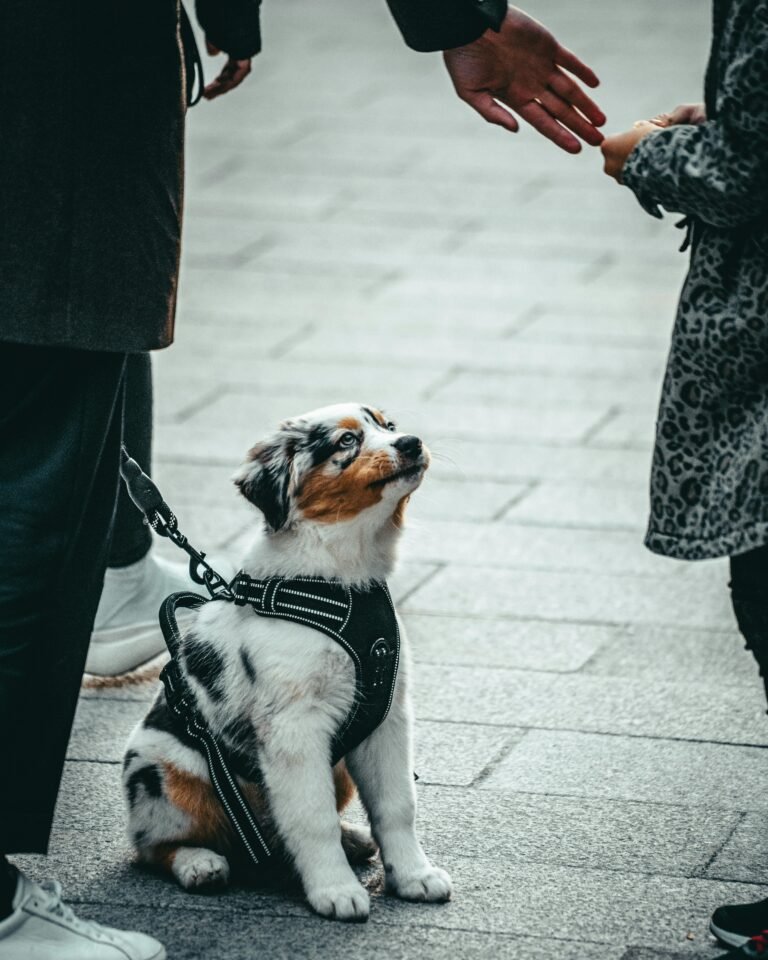Introduction
Barking is one of the most natural ways dogs communicate—but when it becomes constant or reactive, it can drive both you and your neighbors crazy. The key to stopping excessive barking isn’t yelling or punishment—it’s understanding why your dog is barking and teaching calm, alternative behaviors. Using patience and positive reinforcement, you can help your dog learn when it’s okay to bark—and when it’s time to stay quiet.
Why Dogs Bark
Before you can fix barking, you have to understand the reason behind it. Dogs bark for many reasons, and each type needs a different solution:
- Alert barking: To warn you of noises or people nearby.
- Attention-seeking barking: To get your focus, playtime, or treats.
- Frustration barking: When restricted by a leash, window, or fence.
- Fear-based barking: In response to unfamiliar people, dogs, or environments.
- Boredom barking: Because they lack stimulation or company.
Once you identify the type, you can address the root cause instead of the noise itself.
Why Punishment Doesn’t Work
Yelling “quiet!” or using harsh corrections often backfires. Punishment can increase anxiety, confuse your dog, and sometimes even make barking worse. Instead, your goal is to teach your dog what to do instead—stay calm, make eye contact, and respond to a cue.
Step 1: Teach the “Quiet” Cue
This is the foundation for calm communication.
- Wait for your dog to bark once or twice—don’t interrupt immediately.
- Say “quiet” calmly, then hold a treat near their nose.
- When they stop barking to sniff, say “yes!” or click, and reward.
- Repeat several times until your dog starts associating “quiet” with stopping barking.
Over time, you’ll be able to say “quiet” before they bark too much and get a calm response.
Step 2: Reward Calm Behavior
Many dogs bark because being calm isn’t rewarding enough. Start reinforcing silence instead of just reacting to noise:
- Every time your dog stays quiet during potential triggers—like the mail arriving—mark and reward.
- Use calm praise (“good quiet”) and treats to make staying calm feel worth it.
- Gradually extend the time they must stay quiet before rewarding.
Dogs repeat what gets rewarded—so reward peace, not noise.
Step 3: Redirect Energy
For attention-seeking or boredom barking, redirection works wonders. Give your dog a productive outlet instead of scolding:
- Hand them a puzzle toy, lick mat, or stuffed Kong when they start barking.
- Ask for an alternative cue like “sit” or “touch,” then reward compliance.
- Engage in a quick game or brief training session to satisfy their need for engagement.
When your dog learns that quiet behavior earns your attention, barking loses its power.
Step 4: Manage the Environment
Prevent unnecessary barking by controlling triggers when possible:
- Close blinds or use frosted film if your dog barks at passersby.
- Use white noise or calming music to mask outdoor sounds.
- Provide enrichment—daily walks, sniff sessions, and interactive toys—to reduce boredom barking.
Less exposure to triggers = fewer opportunities to rehearse barking behavior.
Step 5: Teach “Look at Me” or “Focus”
Redirecting your dog’s focus helps interrupt barking before it spirals. To teach it:
- Hold a treat near your face and say “look.”
- When your dog makes eye contact, say “yes!” and reward.
- Practice in calm settings, then introduce mild distractions.
Eventually, your dog will respond to “look” even when tempted to bark—because they know attention brings rewards.
Step 6: Use Desensitization for Triggers
If your dog barks at specific sounds or sights (like the doorbell or other dogs), use gradual desensitization:
- Expose your dog to a low-intensity version of the trigger (e.g., doorbell sound at low volume).
- Reward calmness—treats, soft praise—before they bark.
- Gradually increase the intensity over multiple sessions, always staying below their barking threshold.
This rewires their emotional response from “alert!” to “relax, it’s fine.”
Step 7: Add a “Go to Place” Cue
This teaches your dog to retreat and relax on command when something exciting happens—like guests arriving or noises outside.
- Pick a mat or bed as their “place.”
- Guide your dog to it, say “place,” and reward for stepping on it.
- Gradually extend the duration they stay there calmly.
- Pair the cue with common triggers (“doorbell rings → go to place → treat”).
Over time, your dog will automatically choose calmness when stimulated.
Step 8: Stay Calm Yourself
Dogs mirror your energy. If you tense up or yell when they bark, they interpret it as validation of the “threat.” Instead, take a deep breath, move slowly, and speak softly. Calm energy teaches your dog that the situation isn’t worth reacting to.
Step 9: Teach When Barking Is Okay
Dogs need an outlet for their instincts. You can teach a “speak” and “quiet” pairing to give them control:
- Encourage one bark by saying “speak” and reward.
- Then cue “quiet” and reward when they stop.
This lets your dog express themselves appropriately while still understanding limits.
Step 10: Be Patient and Consistent
Barking control takes time. Progress isn’t about silence overnight—it’s about shorter, less intense barking over time. Stay consistent with rewards, manage triggers, and reinforce calmness. Small improvements add up to long-term peace.
Common Mistakes to Avoid
- Using shock or citronella collars: These suppress barking through fear, not understanding.
- Rewarding barking accidentally: Giving attention (even yelling) reinforces the behavior.
- Skipping exercise: Under-stimulated dogs bark more from frustration.
- Being inconsistent: Calm behavior needs steady, predictable feedback.
When to Seek Help
If your dog’s barking is severe or fear-based, a certified behaviorist can create a personalized plan using desensitization and counter-conditioning. Professional support is especially important for dogs with trauma or anxiety triggers.
Conclusion
Quieting your dog doesn’t mean silencing their personality—it means teaching them how to communicate calmly. By identifying the cause, rewarding calmness, and using positive training techniques, you’ll build trust, reduce stress, and enjoy a peaceful home. With time and consistency, your dog will learn that the best way to get your attention isn’t through noise—but through calm connection.






